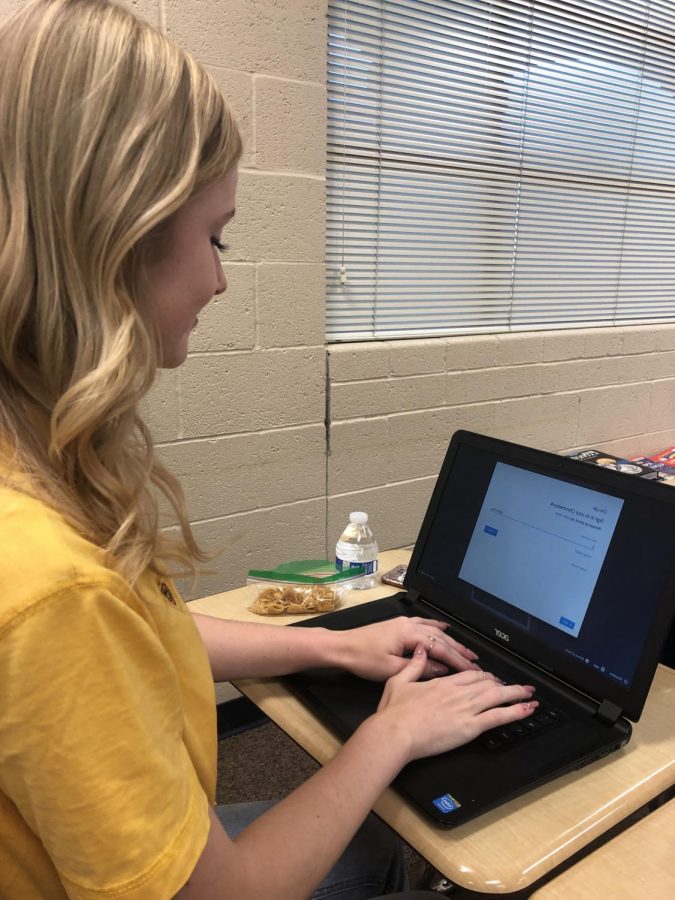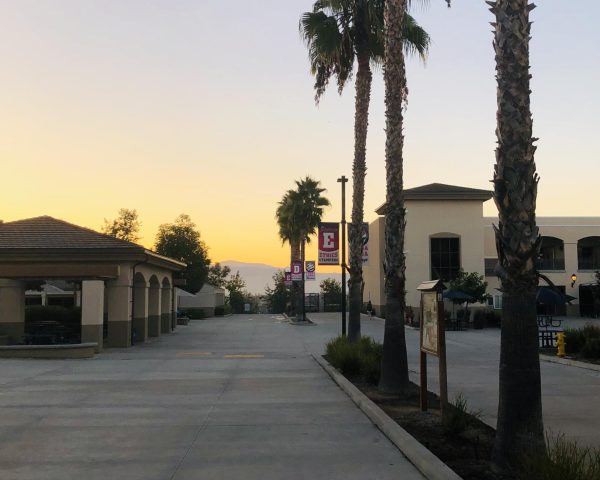How Google Dominated the Classroom
Payton Janish (12) logs into a Chromebook to work on her assignment during class.
November 21, 2018
Since the transition from of pen and paper to keyboard and screen, the excuse of “my dog ate my homework” is not a convincing argument for students of the twenty-first century. Most homework and in-class assignments from math to language arts are fully completed and submitted online. Google has taken advantage of this transition in schools and has become a prominent player in the modern classroom.
Most classes here at YLHS are now supplied with Chromebooks, and students are encouraged or even required to use sources such as Gmail, Google Docs, Google Slides, Google Sheets, and Google Classroom. For most students at YLHS, the days of Microsoft Word and PowerPoint are practically in the past. According to students, this is for a specific reason too; programs such as Google Docs and Google Slides are more practical because you can access your work on any device, not just from home. “This is a great advantage when you forget to print out homework at home,” Alli Provenzano (12) states, “because you can also download these programs as apps on your smartphone, making your documents are accessible practically everywhere you go.” In the last five years, it can be argued that Google has basically taken over the classroom.
Another advantage that Google programs have over competing companies like Microsoft is that users can share and work on documents with others in real time. Instead of emailing documents back and forth, with Google Docs and Google Slides, you can create a shared document that allows multiple people to edit simultaneously. This has transformed the teamwork aspect of group projects in school making emphasizing collaboration. The assignment can also be shared with the teacher who can check up on students’ progress any time to better understand how their students are doing in the process.
Google Classroom is another program that has revolutionized the classroom. The app allows teachers to assign homework assignments to their students online. Once students complete the assignment, they submit it into the teacher on Google Classroom for the assignment to be graded. Since the entire process is completed online, forgetting to bring your homework to school or the possibility of your teacher losing your homework is completely removed. With Google Classroom, assigning and grading assignments is simplified for teachers, allowing them to focus more on teaching than grading. Teachers no longer have to shuffle around piles of paper and waste time in class collecting and passing back these assignments. It is also much easier for students to remain caught up in class if they miss school because all of their missing assignments will be posted on the app for them to complete without any confusion on what they missed. Communication between teachers and students is also made easier because teachers can post announcements for their students to see and comment back on when they are not in class.
With shrinking budgets each year, educators are faced with issues of how to provide the best education for students at lower costs. To aid in this dilemma, Google has strategically reached out to educators to test its products, out-competing other companies with their “low-cost laptops, called Chromebooks, and free classroom apps” (nytimes.com). Today, Chromebooks are a “powerhouse” in most classrooms as they “account for more than half of the mobile devices shipped to schools” (nytimes.com). Google has transformed the classroom, prioritizing skills like teamwork and problem solving for students instead of only traditional academic knowledge.
While Google has added many benefits to the classroom, they are also furthering their own success by gaining generations of future customers. Students are now programmed from elementary school to use Google products. They are instantly signed up with email accounts that are compatible with Google’s various apps, becoming familiar and more comfortable with Google products and programs. This will make it more likely for students to continue to use their products in the future because people like familiarity. By habituating students from a young age to use their resources, Google is gaining a valuable strong customer loyalty that is developed by these new age students from elementary to high school. After graduating, you can even conveniently convert your school email accounts into Gmail accounts.
Nevertheless, Google has made some great advancements in classroom technologies and resources in the past 5 years. It could even be said that they are on the path to monopolizing classroom technology. Google has taken learning in class to the next level by emphasizing collaboration and teamwork in the classroom.











































